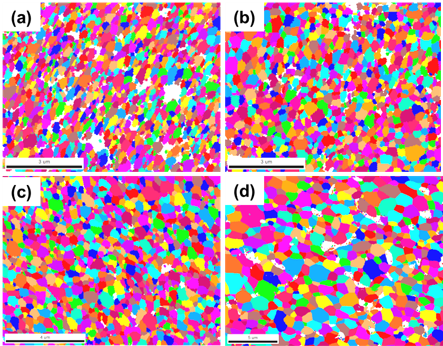Firstly, W-Re nanopowders were prepared by solution combustion method and pure hydrogen reduction method, and ammonium tungstate (NH4)6H2W12O40 and ammonium rhenate NH4ReO4 were used as the precursor after a certain mass ratio. The powder is compressed under uniaxial force. The sintering experiment was carried out in a high-purity hydrogen atmosphere, and two different heating schemes were used: (i) Constant heating rate sintering, that is, the green body is heated to the preset temperature at a rate of 5 ℃/min without holding the temperature. (900-1500℃), then cool to room temperature at a rate of 10 ℃/min. These experiments are used to study sintering kinetics and find suitable first-step sintering conditions to optimize two-step sintering; (ii) two-step sintering, heating the green body to T1, then cooling to T2 and holding it for a long time. The density of the sintered sample was measured by the Archimedes method. The fracture of the sample was observed under the FEI Quanta FEG 450 field emission scanning electron microscope, and the average grain size of the crystal grains was measured by SEM pictures.






















